In this world filled with an abundance of animals, you will find a myriad of species of birds, mammals, and even fish. When it comes to birds, there are many types of colors. You can find blue birds, red birds, green birds, and even white birds. In the United States, thousands of species of birds exist. But if you hone in on each state, things are different. Not all birds frequent every state and you may not be able to find every bird in every state. In terms of Florida, there are around 500 species of birds that live there or spend a part of their lives in the Sunshine State. Let’s take a look at 21 white birds in Florida.
American White Pelican
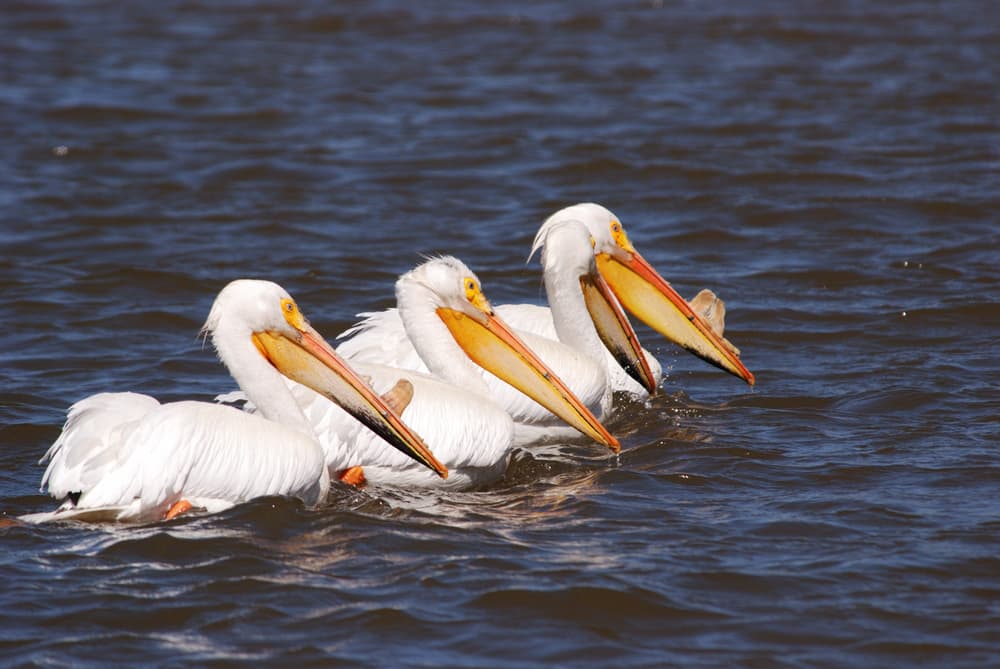
These phenomenal birds can be spotted in Florida during the winter months.
©TFoxFoto/Shutterstock.com
The American white pelican (Pelecanus erythrorhynchos) is a majestic bird that is completely white except for the black feathers it uses while flying. American white pelicans love to be in inland Lakes throughout North America but like to spend the winter along the coasts of the US and Mexico, the Gulf of Mexico, and Central America.
Black-Crowned Night Heron

The black-crowned night heron is found on every single continent except Australia and Antarctica.
©Nycticorax nycticorax/Shutterstock.com
The black-crowned night heron (Nycticorax nycticorax) is a white and gray bird with a black head (hence the name). These birds love to frequent coasts, as well as inland waterways and wetlands. Furthermore, these creatures are usually found year-round in the warmer climates.
Bufflehead
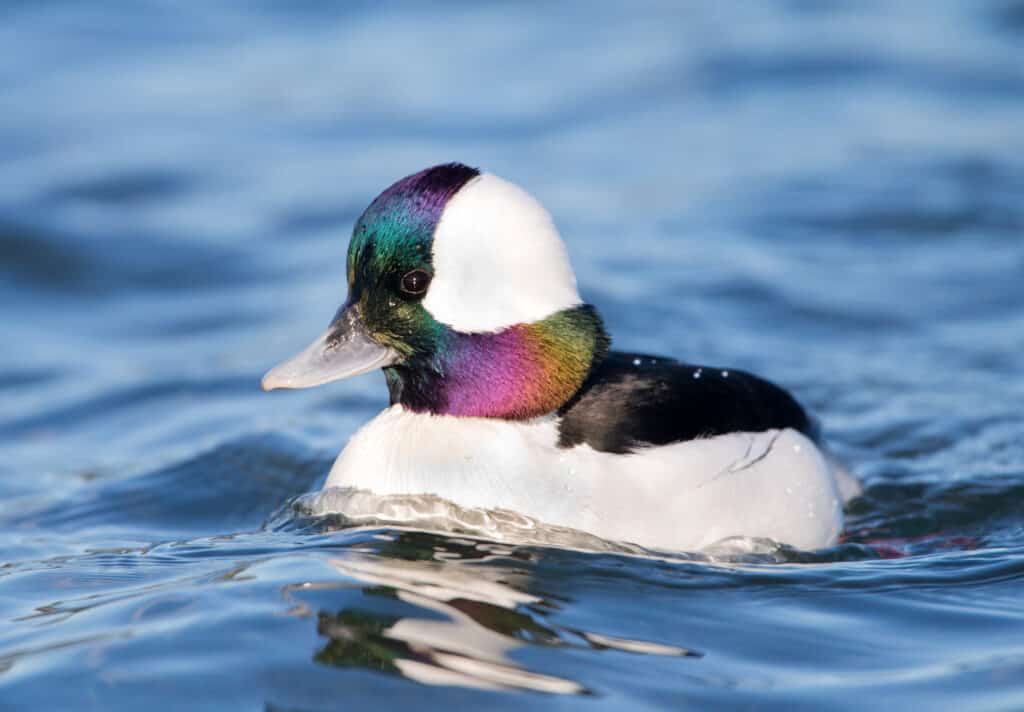
The bufflehead almost always nests in holes made by northern flickers and pileated woodpeckers.
©Birdiegal/Shutterstock.com
Buffleheads (Bucephala albeola) are majestic ducks that roam around in lakes and ponds throughout North America. During the breeding season, they are in Canada but then fly south for the winter.
Cattle Egret

You can see cattle egrets year-round in the state of Florida.
©iStock.com/passion4nature
These small birds usually stay in sunny and warm weather throughout the year, which means you are bound to see them in Central America, the Gulf Coast, and the southwestern US. Cattle egrets (Bubulcus ibis) are found in grasslands, farms, and even on top of livestock (like cattle).
Common Tern
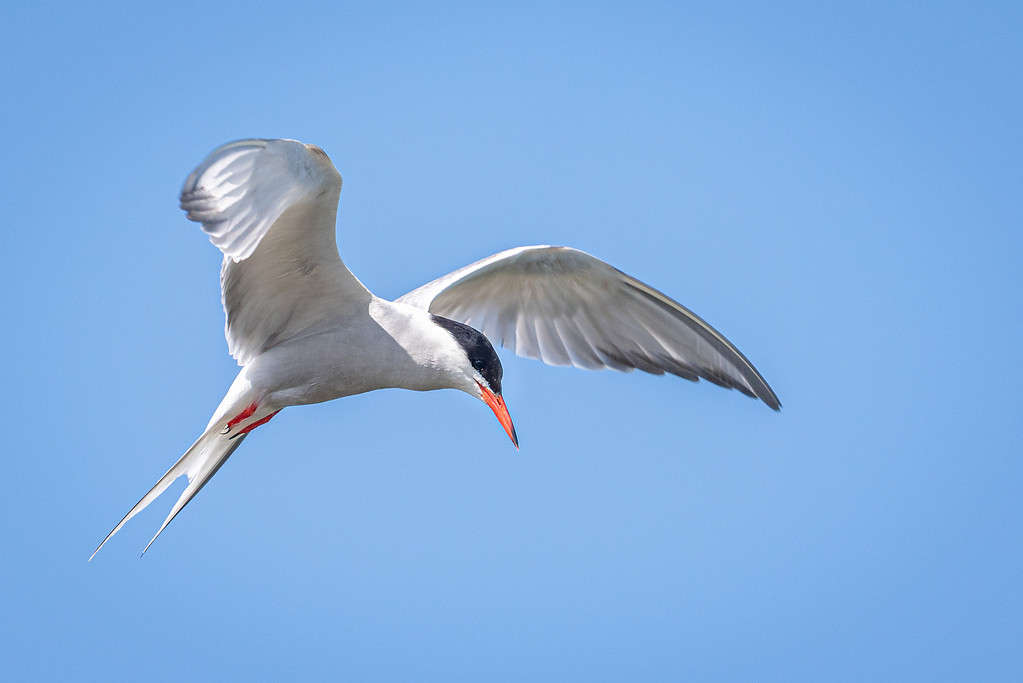
Common terns usually are around in the coastal areas of Florida in the summer and autumn months.
©Wirestock/iStock via Getty Images
These small birds only grow up to 16 inches long and have a wingspan of 31 inches. Common terns (Sterna hirundo) love being around water, especially if the water is near sand. They love hanging around boats and piers, too.
Great White Heron
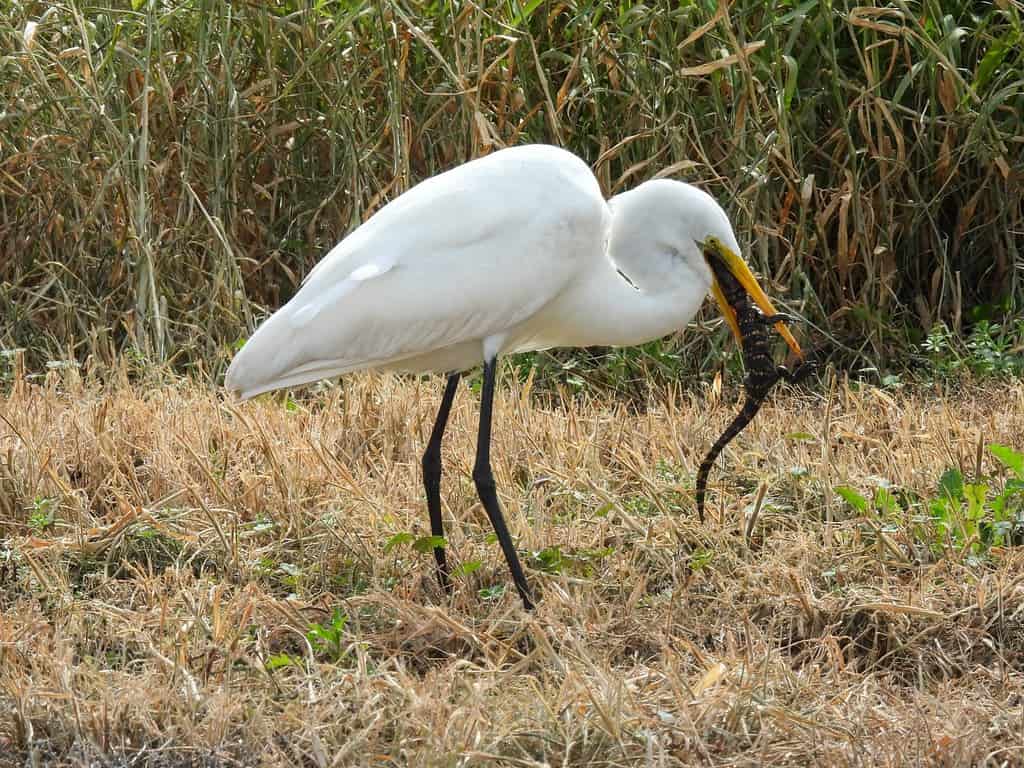
The great white heron lives in Florida throughout the year.
©Lisa Crawford/Shutterstock.com
These majestic birds are also called great egrets where they can grow up to 41 inches long and have a wingspan of 55 inches. The great white heron (Ardea alba) usually lives in the southern and coastal areas of the United States. They love frolicking in marshes and ponds.
Herring Gull
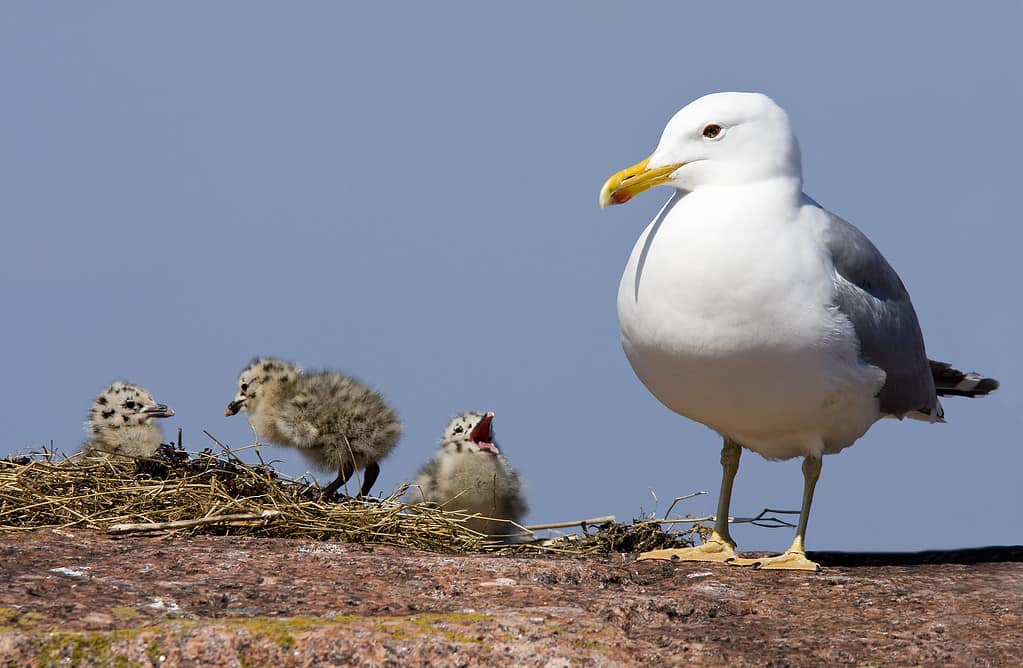
The oldest herring gull was discovered in Michigan in 2015 and was 29 years old.
©aseppa/ via Getty Images
Herring gulls (Larus argentatus) are very popular throughout the United States. They are usually roaming around coasts, beaches, and other places near water. They usually breed in Canada and make their way to the coastal areas of the US and Mexico during winter.
Laughing Gull
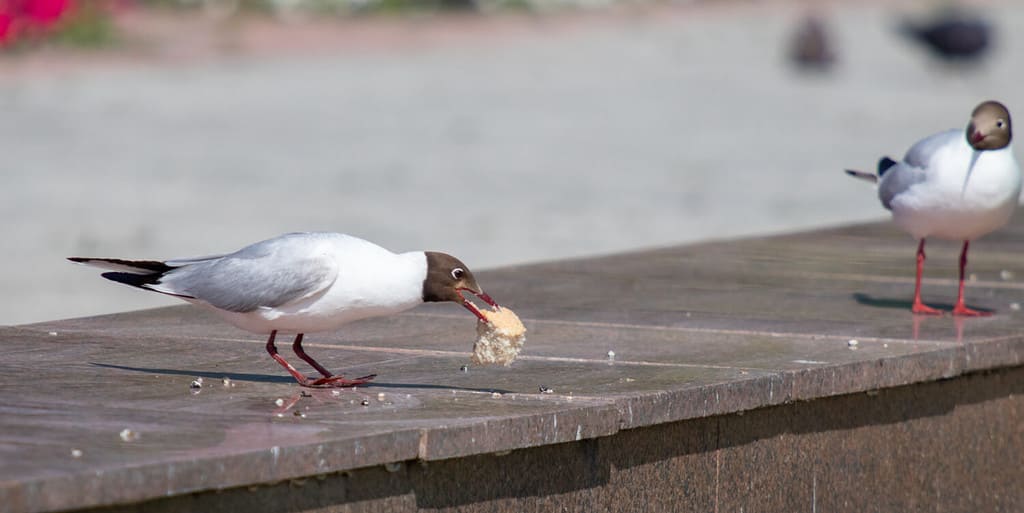
These small birds usually frequent coastal areas like beaches, piers, and even salt marshes.
©Greens and Blues/Shutterstock.com
The laughing gull (Leucophaeus atricilla) usually breeds along the northern Atlantic coast and then spends the winter in Central or South America. But you can usually spot them year-round in Florida because of the state’s sunny and warm weather.
Masked Booby
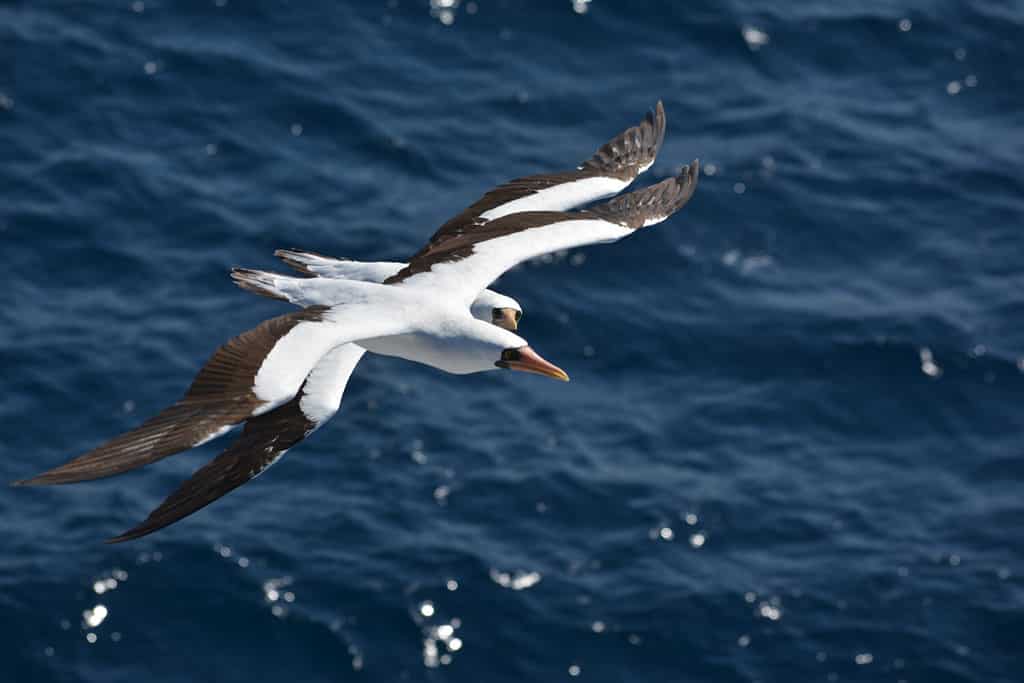
The oldest masked booby that was found was around 25 years old.
©sushil20087817/Shutterstock.com
Usually, the masked booby (Sula dactylatra) is flying about in the open sea. The only place you will be able to see them is in Florida, where they roam freely on the Dry Tortugas islands near Key West.
Northern Gannet
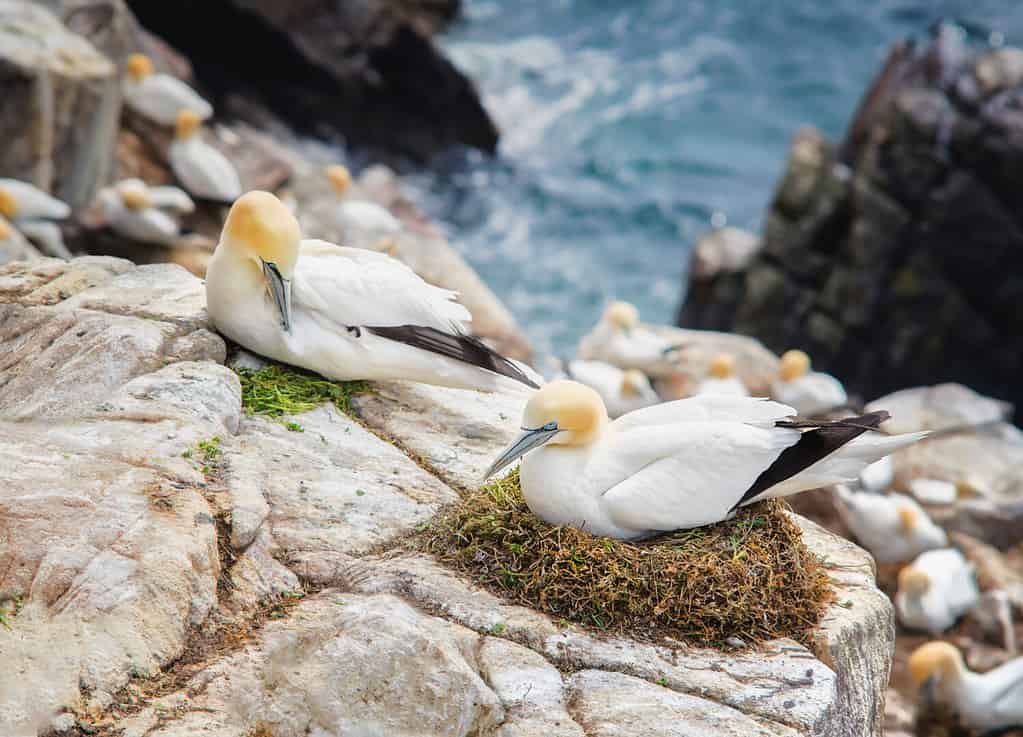
The adult northern gannet may be white, but the juvenile gannet is brown-colored.
©Algirdas Gelazius/Shutterstock.com
Northern gannets (Morus bassanus) usually winter in Florida and you can see them flying along the coast during these months. These amazing birds usually breed in Eastern Canada and then fly down to the Atlantic coast, where you can find them on cliffs.
Ross’s Goose
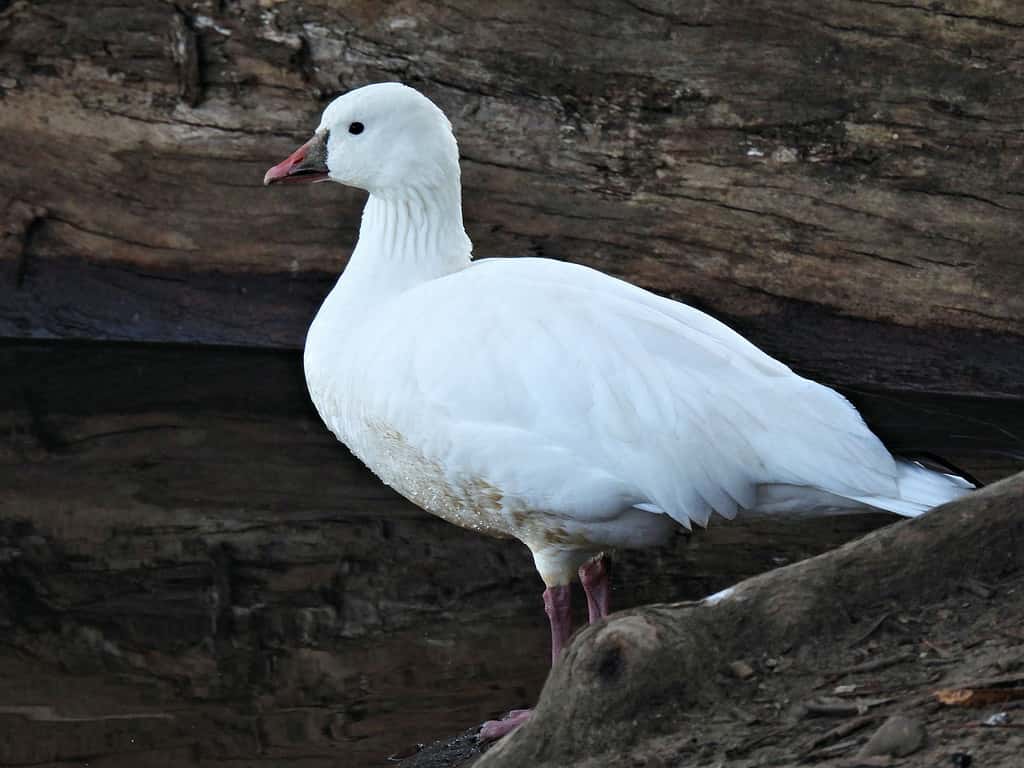
These beautiful birds usually reside in Florida during the winter and early spring months.
©Gerry Woodling/iStock via Getty Images
Ross’s geese (Anser rossii) come from Canada and winter in the warmer weather of the southern US. They love being in both salt and freshwater marshes. They can grow up to 26 inches long and have a wingspan of 54 inches.
Royal Tern
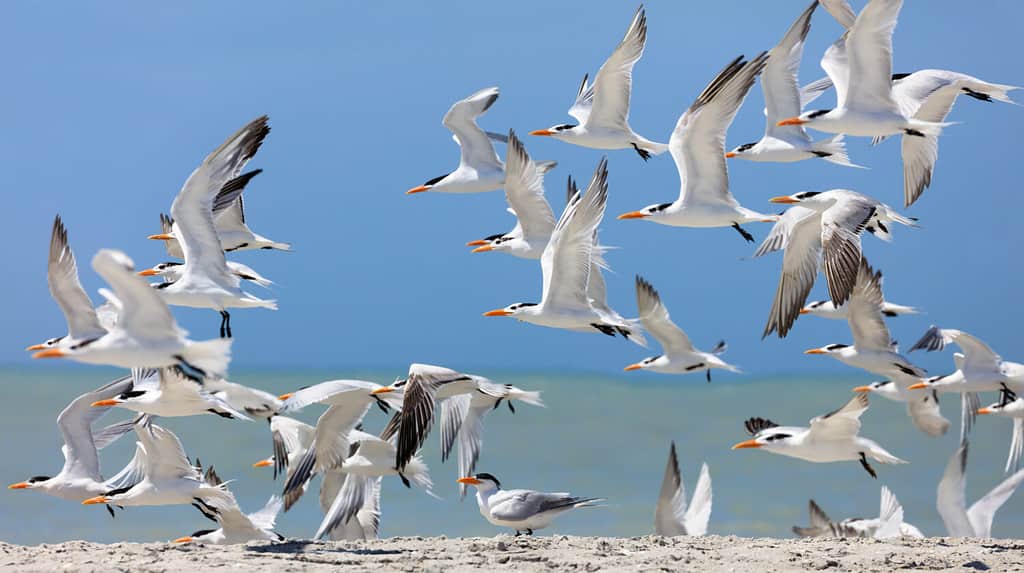
The oldest royal tern was discovered in Belize in 2013 and was estimated to be 30 years old.
©ulrich missbach/Shutterstock.com
The royal tern (Thalasseus maximus) is a small bird that usually resides along the coastal areas of the US, Mexico, and Latin America. These funny-looking birds love to hang out in estuaries, lagoons, and coastal beaches.
Snow Goose

These fantastic birds are usually in Florida during wintertime.
©kingma photos/Shutterstock.com
The snow goose (Anser caerulescens) can grow up to 31 inches long and have a wingspan of 54 inches. They breed in Canada, but they spend their winters in more warm weather down south. They love roaming around marshes and farm fields.
Snowy Egret

The snowy egret can be found in Florida throughout the entire year.
©Harry Collins Photography/Shutterstock.com
These fantastic birds are usually in Mexico or the rest of Latin America. The snowy egret (Egretta thula) is a bird that loves to be flying about in wetlands like estuaries, marshes, or even pools. They can grow up to 27 inches long and have a wingspan of 39 inches.
Snowy Plover

These endangered birds are usually spotted on the west coast of Florida from June to September.
©CamandBelleStudio/Shutterstock.com
The snowy plover (Charadrius nivosus) can grow up to 7 inches long and has a wingspan of 14 inches. These small birds live on the Pacific and Gulf coasts of the US and Mexico. They love hopping about on salt flats or beaches.
Swallow-tailed Kite
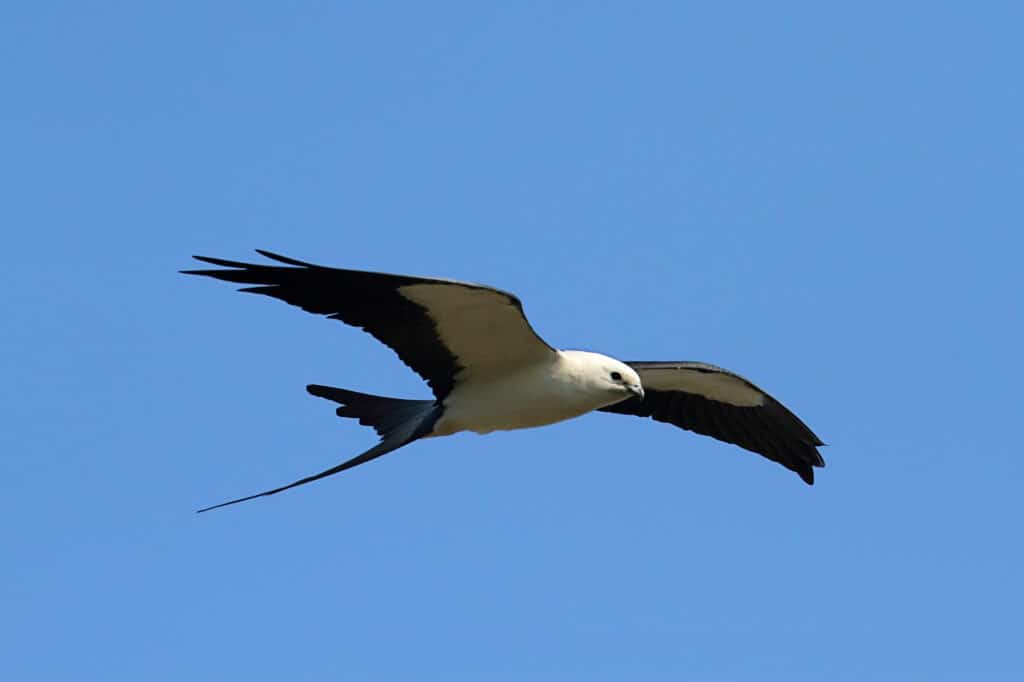
These amazing birds usually spend their time in Florida from mid-February to September.
©iStock.com/SteveByland
The swallow-tailed kite (Elanoides forficatus) usually lives in South America, but they breed along the Gulf Coast region. These birds love roaming around in marshes, swamps, and any type of humid forest. That’s why Florida is so ideal for them.
White Ibis

The American White Ibis can be spotted all over the Gulf Coast and the southern Atlantic coastal areas.
The great part about these majestic birds is that you can spot them all year. You’ll have to go to wetland environments — like marshes, estuaries, mangroves, and swamps — to take a peek at them. White ibises (Eudocimus albus) can grow up to 27 inches long and can have a wingspan of a whopping 27 inches.
White-tailed Kite

You can spot the white-tailed kite at any time throughout the year.
©rancho_runner/iStock via Getty Images
The white-tailed kite (Elanus leucurus) Can grow up to 17 inches long and have a wingspan of up to 42 inches. The white-tailed kite is also a bird that lives in the southern states and along the Pacific states.
White-tailed Tropicbird

The white-tailed
tropicbird
can grow up to 32 inches long with a wingspan of 38 inches.
©Henner Damke/Shutterstock.com
Although the bird may not be in Florida much, the white-tailed tropicbird (Phaeton lepturus) can stay for several weeks or months on the East Coast during its breeding season, which takes place in spring and summer.
Whooping Crane
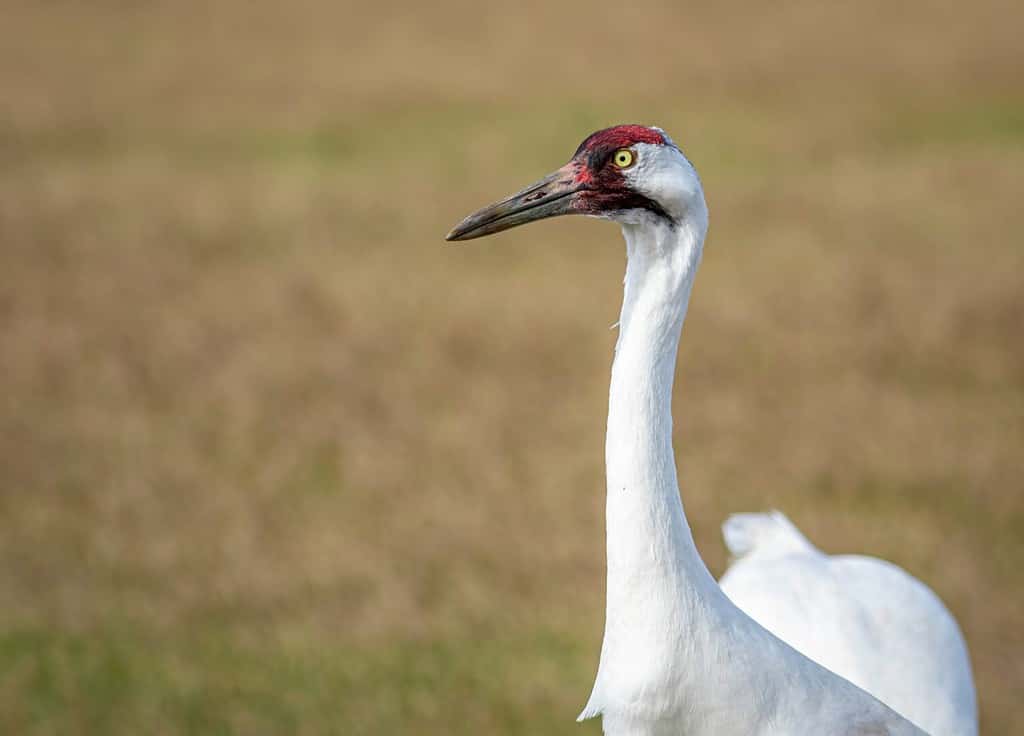
The endangered bird is the tallest in North America.
©Matthew Jolley/Shutterstock.com
The whooping crane (Grus americana) usually breeds at the Necedah National Wildlife Refuge located in Wisconsin. However, the birds winter at the Chassahowitzka National Wildlife Refuge and can be spotted year-round near Kissimmee, FL.
Wood Stork
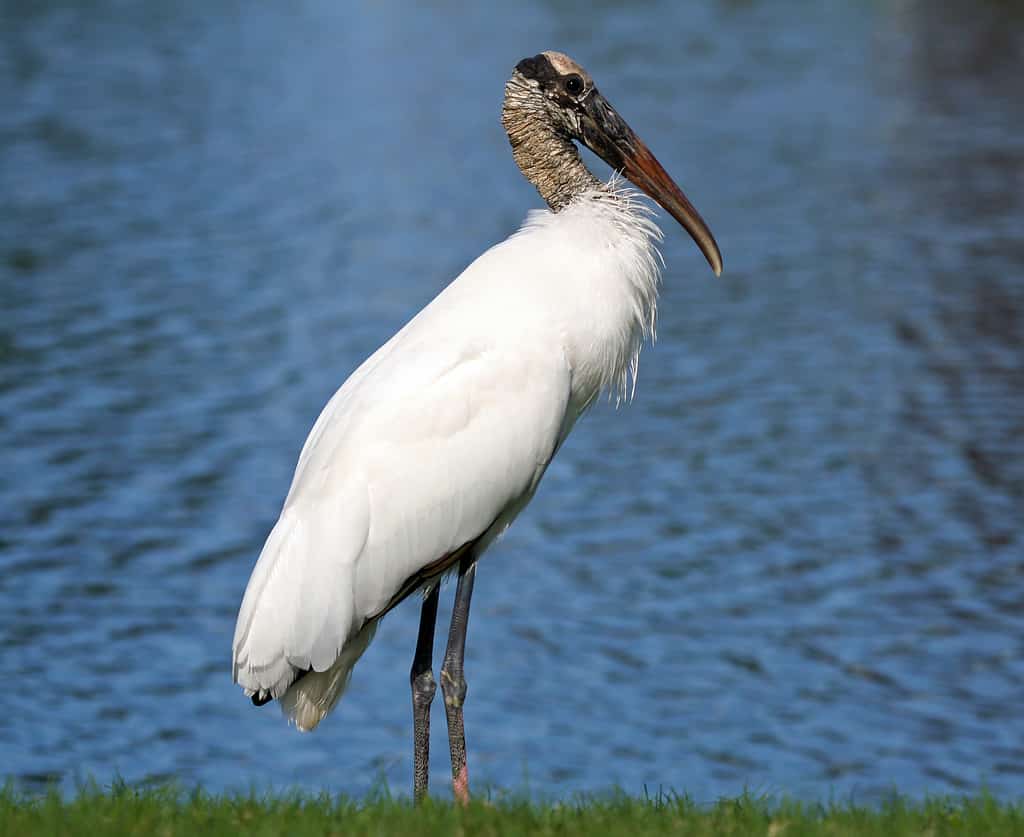
You can spot these fascinating birds all year round in Florida, especially between October to March.
© Googie man at en.wikipedia / CC BY-SA 3.0 – License
The wood stork (Mycteria americana) is a bird that frequents wetlands. When they breed, wood storks love to go to swampy and marshy areas where there are a lot of trees. Lastly, the wood stork is the only bird to breed in North America.
Conclusion
And there you have it, these are the 21 white birds in Florida. If you get the chance to visit the Sunshine State, it’s a good idea to have a list and check them off when you see one of these beautiful white birds.
The photo featured at the top of this post is © Oleg Kovtun Hydrobio/Shutterstock.com
Thank you for reading! Have some feedback for us? Contact the AZ Animals editorial team.







